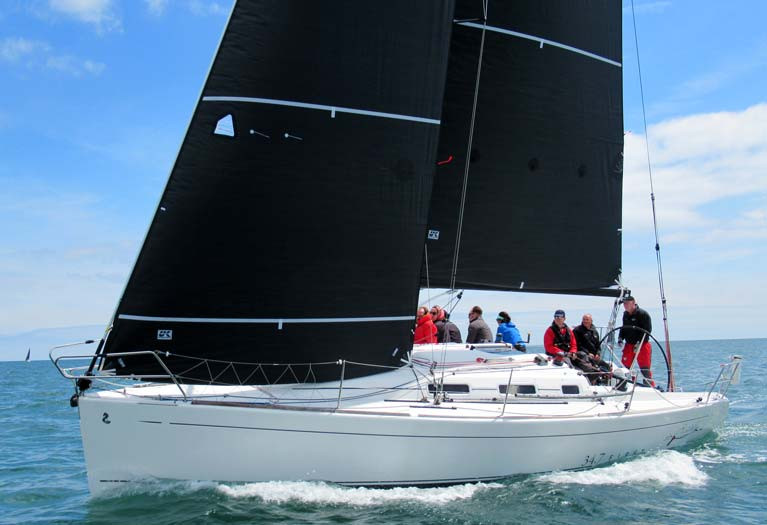The art of sail design has come a long way since the days of hand-dawn files and even rudimentary CAD design programmes. Today, UK Sailmakers Ireland uses SAILPACK which, in our opinion, is the best sail design program on the market. SAILPACK has 3-D design tools that allow a designer to create complex arrays of computerised fluid dynamic patterns that articulate both acronymic flow and load paths.
With SAILPACK, the designer first creates a 3D model of your boat replicating the rig, deck layout, etc. that the sail will ultimately have to interface with. From there, they can then design the sails to perfectly match your boat dimensions, sheeting angles, and sailing conditions. This is the best way to design the sails for any boat because it allows you to see the overall picture of how the sails work together and how they fit the boat. You also get to confirm how the sails fit around the spreaders and shrouds (very important details); you can also set the clew height and sheeting angles.
Next time you’re at your sail loft, ask your sail designer to show you these design files so you can see that you’re getting the very best sails for your boat.
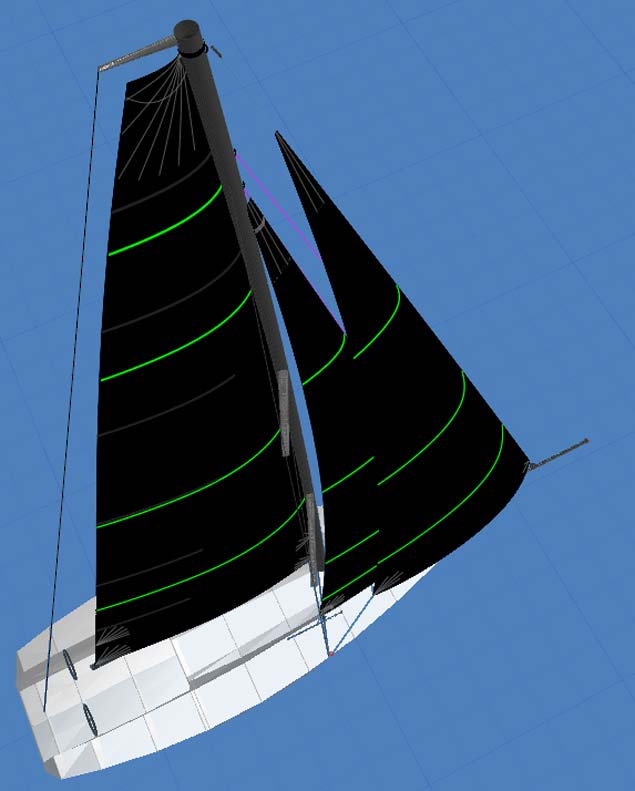 Flying Jib top view
Flying Jib top view
How we design the sails
When designing sails, the designer looks at the “balance” of the boat and the best way to make the boat drive forward with the least amount of drag. This balance between the keel, rudder, hull and sails is called the “lead.”
When we design the sails, we look carefully at the lead to optimise the driving force between the sails and the boat. For example, adding extra roach to a mainsail will add pressure at the back of the boat, changing the lead and thus causing drag. This extra roach may only add 1% more power but add 3 % more weather helm which is undesirable. To balance this, the designer can add more headsail area as well resulting in a more balanced feel on the rudder. This balance between the main, jib, keel and rudder is critical to the boat working correctly, and that’s why we will never just independently design a mainsail or jib without looking at the overall picture of the boat.
An example of this can be seen in the J 121 design file below. You’ll note that the Flying Jib is set at the middle of the pole. This is to help balance the boat upwind and on a reach. It pushes the bow down more, and you're able to sheet on the mainsail more to provide more power and drive to the boat upwind and reaching. Having the tack out on the very tip would create considerable lee helm on the boat, and this will affect how the boat sails upwind.
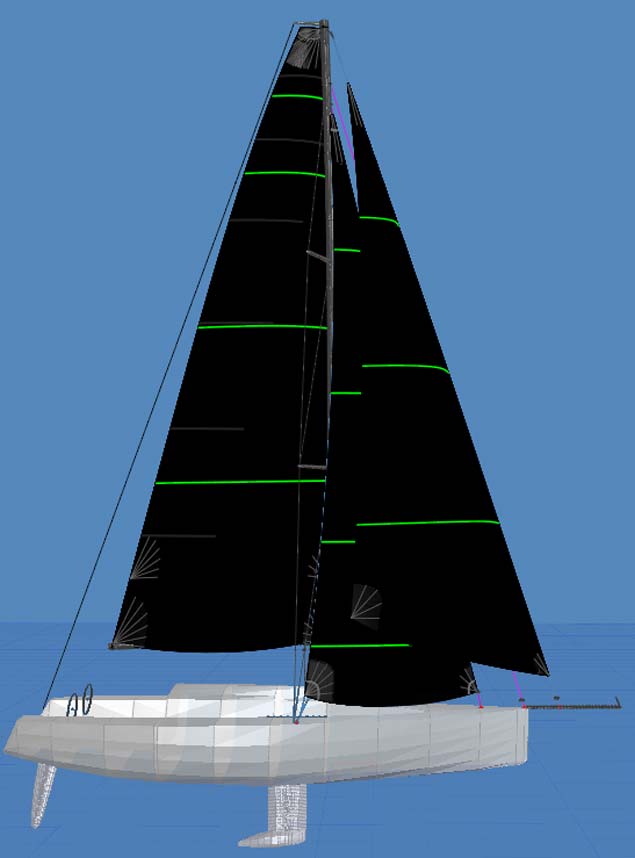 Flying Jib side view
Flying Jib side view
There are some basic design moulds we work from: one design, Cruising, club racing, racing and high-performance racing. Each of these basic moulds will have different parameters and set up, like twist, depth and camber position.

For example, most mainsails are designed to have their maximum camber between 38% and 46% back from the luff. Rarely will the designer design the main outside of these values. You can tweak this parameter to move the centre of effort forward, but you have to ensure that you do not close the slot between the main and the jib. Closing the slot will change the airflow across the sails and will slow the boat down.
How the design tools work
Lift and drag are the two basic factors considered when designing a sail – and the concept is very similar to designing a wing of an aeroplane. In the design editor file below, you can see the tools we have to change the shape of the sail where the designer can adjust the vertical camber bottom profile or horizontal camber top profile of the sail to suit the particular boat and its sailing conditions.
In the top view, you can see the overall shape of the sail at each section. This is “section 82%” or the top of the sail at the yellow dot. In the bottom view, you see the parameters are in the per cent value and not the real value. The designer can move any of the icons with the mouse (the black dots on the screen) up or down to give your sail its optimal shape.

Two highly productive tools are the green line at the luff and the leech. By moving these, the designer can adjust the sail’s entry and exit angles, providing a smooth aerodynamic flow. This is a fantastic tool to get the shape of the sail correct.
The relationship between how the mast bend and the slot working together needs to be understood when designing the sail. For example, upwind sailing, with the backstay full on you will design the luff curve to allow the sail to flatten, but not over flatten the sail, so that the sail retains just enough shape to provide power and driving force without closing the slot which causes drag. When sailing downwind, with the backstay off, the static bend will allow the sail to deliver its maximum power to drive the boat forward.
It should be noted that bot mainsails and jibs have become a lot flatter and use tighter sheeting angles over the years due to the invention of moulded sails technology and having stiffer fabric available.
Headsail Design
Headsail design has come a long way and, as noted, non-overlapping jibs are a lot flatter in the leech with more twist (between 60% and 80% of the leech). They have also gone very deep and knuckled, creating a better attack entry angle which both balances the boat and creates a better flow over the headsail. Overlapping genoas haven’t changed much other than their camber shape which has become a lot smoother with a straighter exit. Having 3-D design tools allows the designer to marry the leech to the rig which you can see in the design file below. As you can see in the following image, the leech is very close the spreaders and shrouds, allowing the max headsail area and balance between the sails.
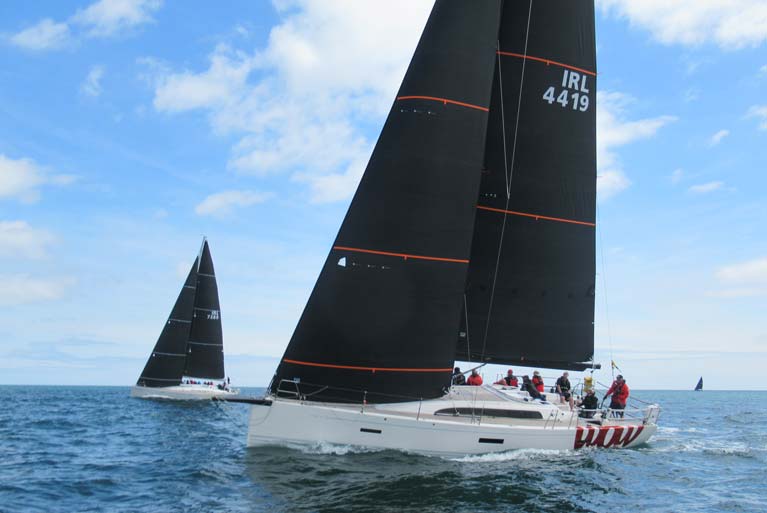
Asym Spinnakers
Thanks to design advancements over recent years, asymmetrical spinnakers have become more user-friendly and easier to trim. We now set the clews higher, which helps with the leech twist while improving sheeting angles. Asyms have evolved from reaching sails to tack-up running sails; now we have sails that work for both reaching and running making shifting gears easier. Designs have also added a bungee retractor system into the sails which replace the need to band the sail...helping the environment. The system retracts back into the luff and the foot when the sail is hoisted, so the system is fully reusable every time.
The most interesting recent development in Asym design, however, is the new cruising top-down furling Gennaker. This easy-to-use / easy-to-furl sail has a cable in the luff and will never get a twist in it. This new type of sail has transformed cruising and offshore racing.
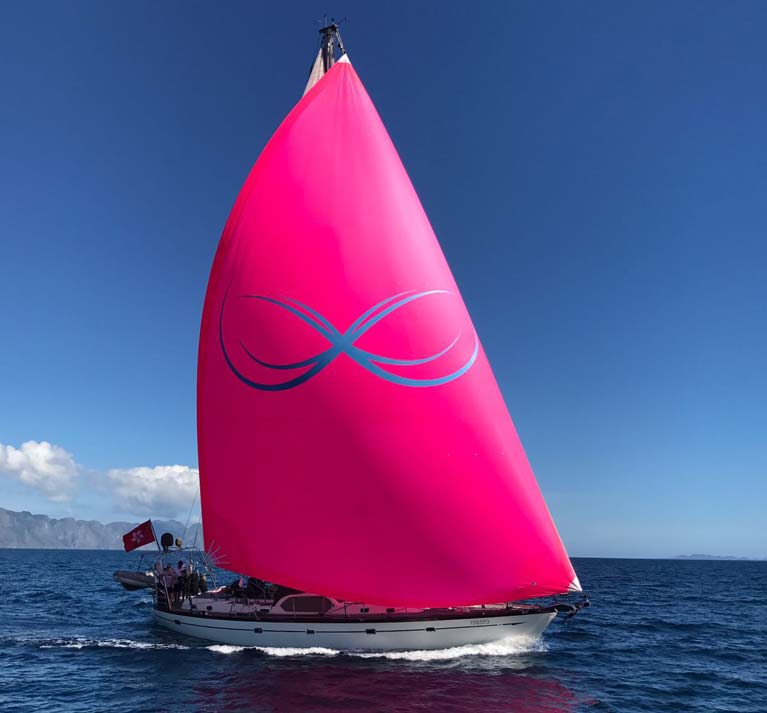 Top-Down cruising gennaker
Top-Down cruising gennaker
The top-down furling Asym is a big development for sailors who push their boat hard offshore or just cruise a lot. Cruisers can leave the sail up overnight, and furl and unfurl when needed. Racers find it’s a great sail to push hard and with the option of just furling the sail when you wipe out.
A new twist in sail design
The twist is an important factor now in sail design and sailing. With stiffer sails now being used, we are putting twist back into the leech of sails, so they open up (depower) quickly and get the laminar flow working again. Getting the airflow to stick to the back of your sail is vital. A handy tip is to put your hand on the leech/clew area of the sail and feel if the airflow is sticking to the sail.
Modern sails have transformed sailmaking and how the sails work. An example is the use of uni-carbon sails which are stiffer and last longer. These sails are structurally designed to disperse aerodynamic loads from head to the clew. They also use uni-carbon to carry the load from luff to leech allowing the sail to hold its shape better.
There continues to be an evolution in the art of sailmaking, and the developments discussed in this article are just the tip of the iceberg. The key, however, is to remember that albeit sail design now is largely computerised, it is the experience, insight, and imagination of the designer that ultimately creates a fast, well-built and durable sail. Speak to your sail designer and see for yourself.
See for your self in real-time
To use SAILPACK viewer, please download this link here then sign up for it. And once you get the key code, then you can view the design file attached (in the yellow panel below). It’s a 3D Design view of a J121 Flying Jib PPK. Which you can see in real-time. This will give you an idea of sail shape and sail design in real-time. Including the hull, keel, rudder, sails. From this, you can see the relationship between all of the items we talked about and how they work as a team together.



























